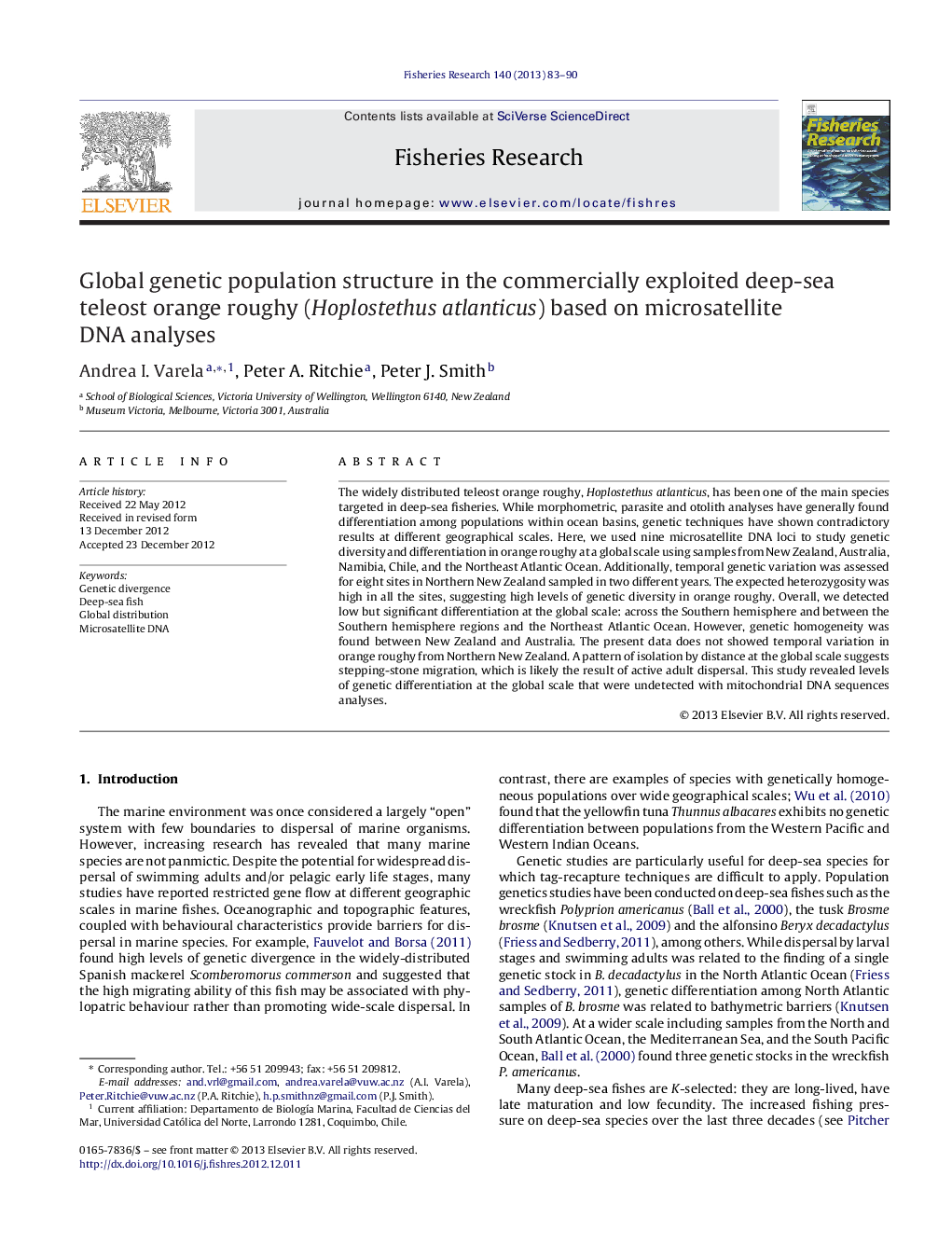| Article ID | Journal | Published Year | Pages | File Type |
|---|---|---|---|---|
| 4543202 | Fisheries Research | 2013 | 8 Pages |
The widely distributed teleost orange roughy, Hoplostethus atlanticus, has been one of the main species targeted in deep-sea fisheries. While morphometric, parasite and otolith analyses have generally found differentiation among populations within ocean basins, genetic techniques have shown contradictory results at different geographical scales. Here, we used nine microsatellite DNA loci to study genetic diversity and differentiation in orange roughy at a global scale using samples from New Zealand, Australia, Namibia, Chile, and the Northeast Atlantic Ocean. Additionally, temporal genetic variation was assessed for eight sites in Northern New Zealand sampled in two different years. The expected heterozygosity was high in all the sites, suggesting high levels of genetic diversity in orange roughy. Overall, we detected low but significant differentiation at the global scale: across the Southern hemisphere and between the Southern hemisphere regions and the Northeast Atlantic Ocean. However, genetic homogeneity was found between New Zealand and Australia. The present data does not showed temporal variation in orange roughy from Northern New Zealand. A pattern of isolation by distance at the global scale suggests stepping-stone migration, which is likely the result of active adult dispersal. This study revealed levels of genetic differentiation at the global scale that were undetected with mitochondrial DNA sequences analyses.
► High microsatellite DNA diversity in the deep-sea fish orange roughy. ► Low but significant levels of genetic differentiation were found at a global scale. ► Genetic homogeneity was found between New Zealand and Australian samples. ► There is a global pattern of isolation by distance (IBD).
